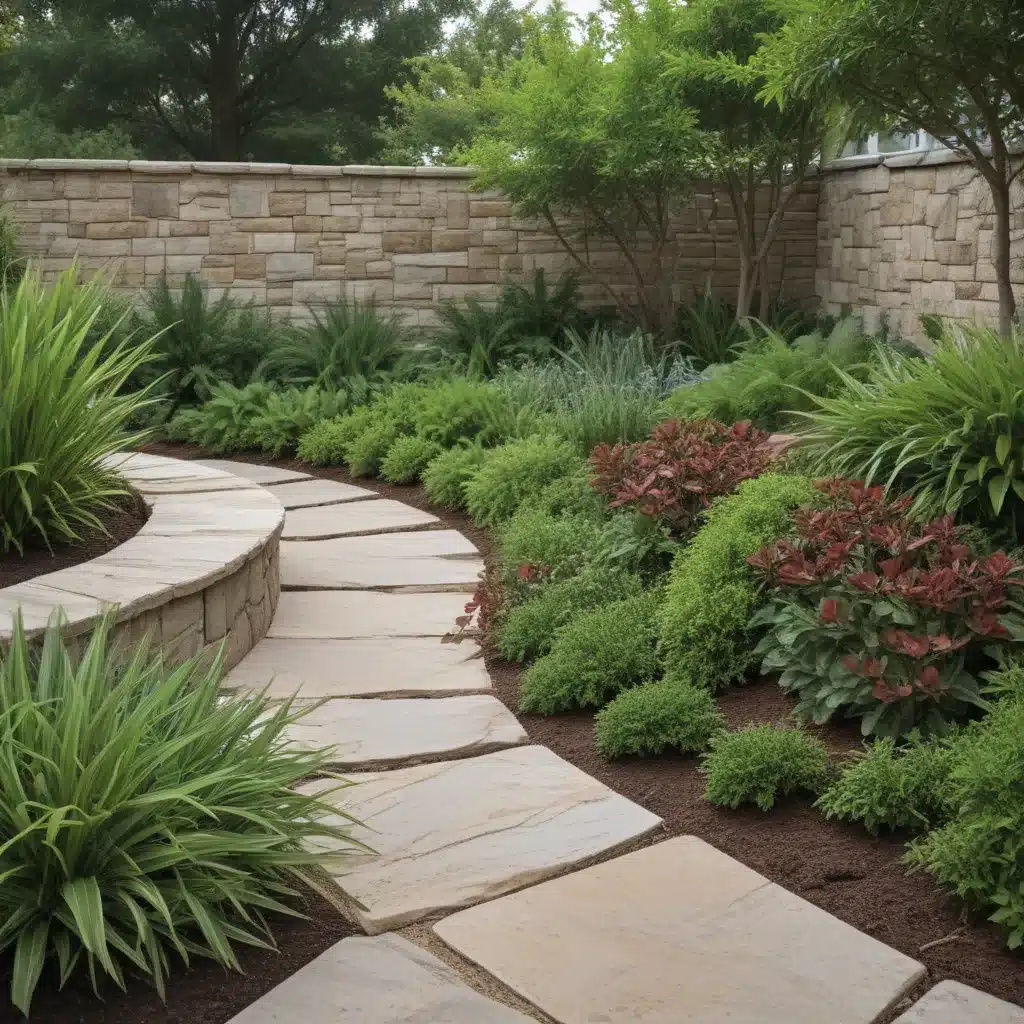
Hardscaping: The Unsung Hero of the Garden
When you think of a beautiful garden, what likely comes to mind are the lush plants, the vibrant blooms, and the verdant foliage that bring it to life. While those elements certainly play a crucial role, there’s an unsung hero that often goes overlooked: the hardscaping.
As a landscape designer for over 20 years, I’ve come to appreciate the profound impact that hardscaping can have on a garden’s overall aesthetic and functionality. It’s the bones that support and frame the living, breathing elements, defining the spaces and guiding the eye to truly showcase the plants.
I remember when my wife, Patti, and I set out to create our own garden oasis back in 2006. Faced with a wide-open canvas, we knew that thoughtful hardscaping would be the key to crafting an engaging, multidimensional space. Rather than just randomly plopping down plants, we took a step back and developed a comprehensive plan, giving equal attention to the structural components and the living elements.
As I shared in Fine Gardening magazine, the hardscaping underpinning a space is just as vital as the plants themselves. It’s the paths that lead visitors on a journey, the walls and fences that create a sense of enclosure and intimacy, the sculptural features that captivate the eye. When thoughtfully combined, these hardscape elements can transform a garden into an immersive, multidimensional experience.
Hardscaping: The Backbone of the Garden
Hardscaping is the non-living, structural components of a landscape design. This can include everything from walkways and patios to retaining walls, water features, and even architectural elements like pergolas or arbors. Aggregate, such as gravel or pavers, also fall under the hardscaping umbrella.
But hardscaping is so much more than just utilitarian features. When done right, it can elevate a garden to an art form, guiding the visitor’s experience and creating a cohesive, visually striking design. It’s the backbone that supports the living, breathing elements, and it’s what transforms a garden from merely pretty to truly captivating.
In our own garden, for example, we used a variety of hardscaping materials – from reclaimed granite and bluestone to rusted metal sculptures and upcycled farm equipment – to craft a multidimensional, immersive space. As I explained in Fine Gardening, we carefully planned the placement of each element, ensuring that the hardscaping not only served a practical function but also created visual interest and a sense of discovery.
Hardscaping: The Art of Defining Space
One of the key roles of hardscaping is to define and shape the spaces within a garden. By strategically placing paths, walls, and other structural elements, you can create a sense of enclosure, guide the visitor’s eye, and even influence the perceived size of the space.
In our garden, for instance, we used asymmetrical placement of focal points to pique visitors’ interest and encourage them to explore. Our front Japanese-style gate serves as a “frame” that only allows a limited view of the patio and raised bed beyond, inviting people to venture in and discover more.
Allées, which are walkways bordered by trees or hedges, are another powerful hardscaping tool for defining space. These formal elements can create a sense of grandeur and draw the eye toward a specific destination, like the entrance to a home or a stunning water feature.
But hardscaping doesn’t just have to be about creating boundaries and enclosures. It can also be used to visually expand a space, such as by using permeable paving materials or incorporating strategically placed mirrors to create the illusion of depth.
Hardscaping: The Accent that Brings Plants to Life
While the structural components of a garden are essential, they shouldn’t overshadow the living, breathing elements. That’s where hardscaping can truly shine as an accent, elevating and showcasing the plants in ways that elevate the overall design.
In our garden, for example, we carefully selected hardscaping materials and placements that echoed the shapes and textures of the plants. The tiered branching of our Japanese white pine (Pinus parviflora ‘Glauca’) mirrored the tiers of our disc-harrow water feature, while a weeping Norway spruce (Picea abies ‘Pendula’) cascaded down the smooth boulders, creating a seamless visual flow.
Accent plants, with their bold colors and unique forms, can also be beautifully complemented by thoughtfully placed hardscape elements. In the front of our home, for example, a mass of ‘Blue Ice’ bluestar (Amsonia ‘Blue Ice’) draws the eye to a playful wagon wheel sculpture hovering above like a flower.
But hardscaping can do more than just accentuate the plants – it can also help to unify the overall design. As the NC State Extension explains, the consistent use of materials like stone, metal, or wood can create a cohesive visual thread throughout the garden, tying the various elements together.
Hardscaping: The Key to a Truly Captivating Garden
In the end, hardscaping is the unsung hero of the garden – the structural foundation that supports and elevates the living, breathing elements. By thoughtfully integrating hardscape features into your landscape design, you can create a space that is not only functional but also visually captivating, guiding the visitor’s experience and showcasing the beauty of the plants.
As I’ve learned through my own gardening journey, the key is to approach hardscaping with the same level of creativity and intentionality as you would the plant selection. Whether it’s using reclaimed materials to add a touch of whimsy, or carefully placing pathways to create a sense of discovery, the possibilities are endless.
So the next time you’re planning a garden renovation or starting from scratch, don’t forget the power of hardscaping. It may not be the star of the show, but it’s the unsung hero that can truly make your garden shine. And who knows – you just might find that you have a bit of a hardscaping addiction, just like me!
















